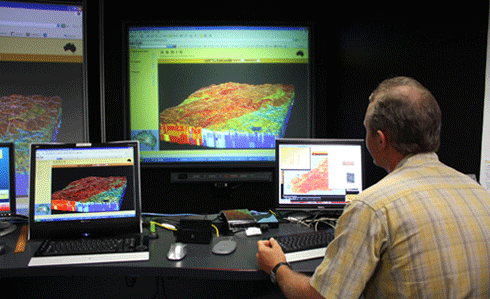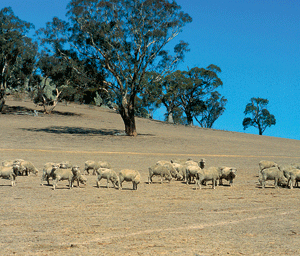
|
Published: 28 November 2011
Australia to get new national soil mapping facility
In the run up to World Soil Day on Monday 5 December, TERN – the Terrestrial Environment Research Network has announced it will fund a new soil mapping facility for Australia.

|
|
Maps made possible through the TERN investment will provide a prediction of soil properties (such as texture and soil carbon) for fine-scale grid cells to a depth of 2 m. Credit: CSIRO
|
The aim of the new facility – the Soil and Landscape Grid of Australia – is to create a fine-scale soil map for all of Australia.
Although most people tend to take soil for granted, it is a ‘rare and precious commodity’, according to CSIRO soil scientist, Mike Grundy, who has been appointed Director of the facility. ‘It develops slowly. In human timeframes, it is a non-renewable resource.
‘It is the source of nutrients and water for agriculture and forestry systems. It provides a habitat for teeming biodiversity. And it fulfils a complex buffering role against environmental variability – ranging from dampening diurnal and seasonal change in temperature and water supply, to the storage and binding of a range of chemical and biological agents.
‘All soils are not equal. They vary substantially in their capacity to support plants and perform the vast range of ecosystem services we depend on.
‘Some soils have naturally very low levels of nutrients. Others have nutrients in abundance. Still others have toxic levels of some elements. Some soils can store more than 300 mm of water per metre of soil for plants to use across a growing season; others store less than 30 mm.
‘In an ecological sense, these are not distinctions between good and bad soils. Some of our rarest, most diverse and remarkable plant communities occur on low-nutrient, dry soils.
‘In a land management sense, however, it means we need to use soils knowing what they are capable of, and it means that many soils are vulnerable to being pushed beyond their limits.’
At a local scale, the new soil map will benefit farmers and their advisers to increase production from the same inputs of water, nutrients or energy.
‘A big opportunity here is to develop “soil apps” for smartphones and similar devices. These will bring together the soil map information, the models, and the local system to guide farm decisions for irrigation, pesticide use, fertilisation and so on,’ says Mike.
At a broader scale, the map will help solve regional problems such as reducing sediment and nutrient movement from the catchments into the Great Barrier Reef lagoon, or balancing different land uses in peri-urban agricultural areas.
This facility will also contribute to similar projects in Indonesia, Papua New Guinea and the Pacific as part of GlobalSoilMap.net.
Source: TERN



